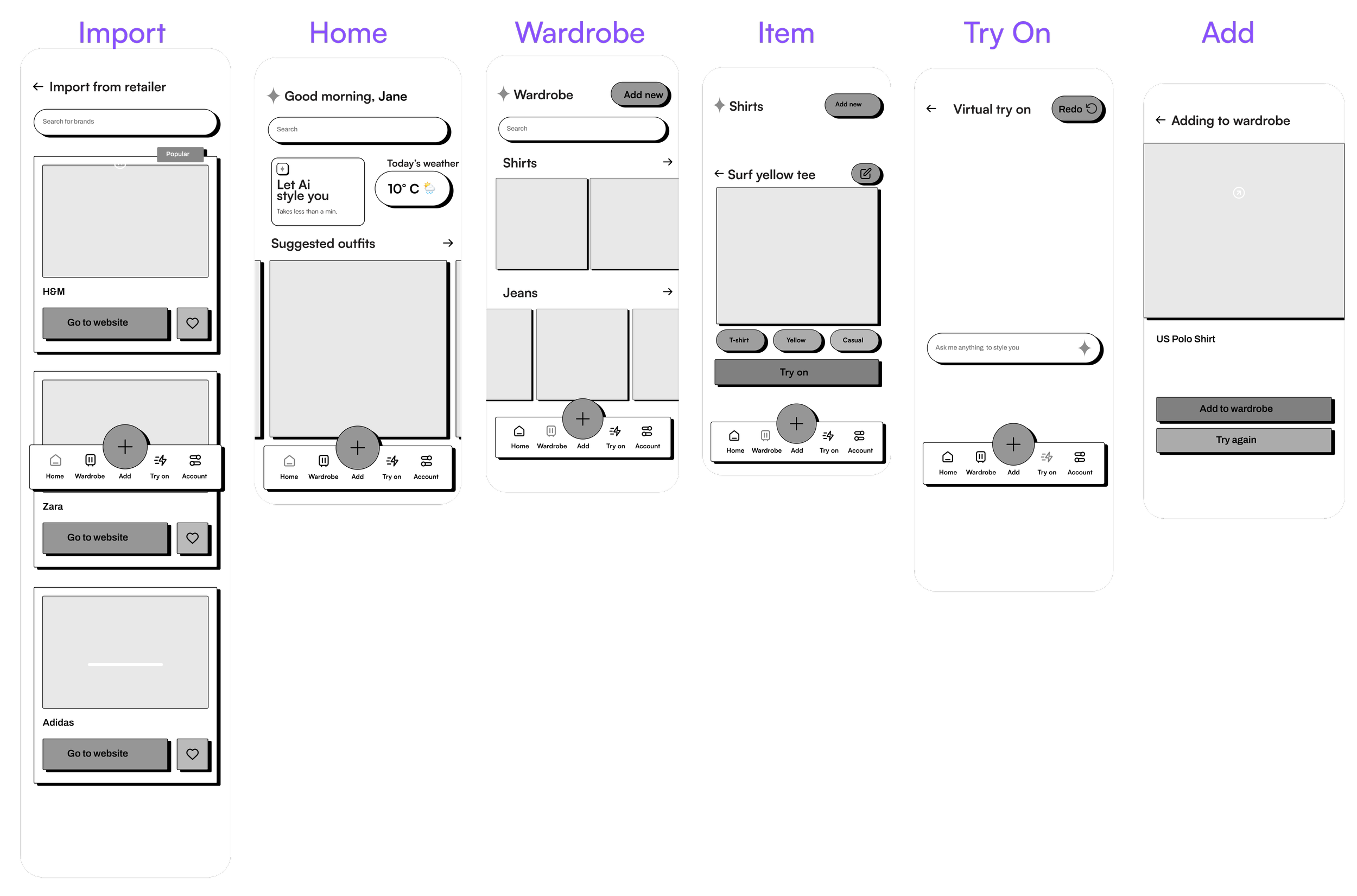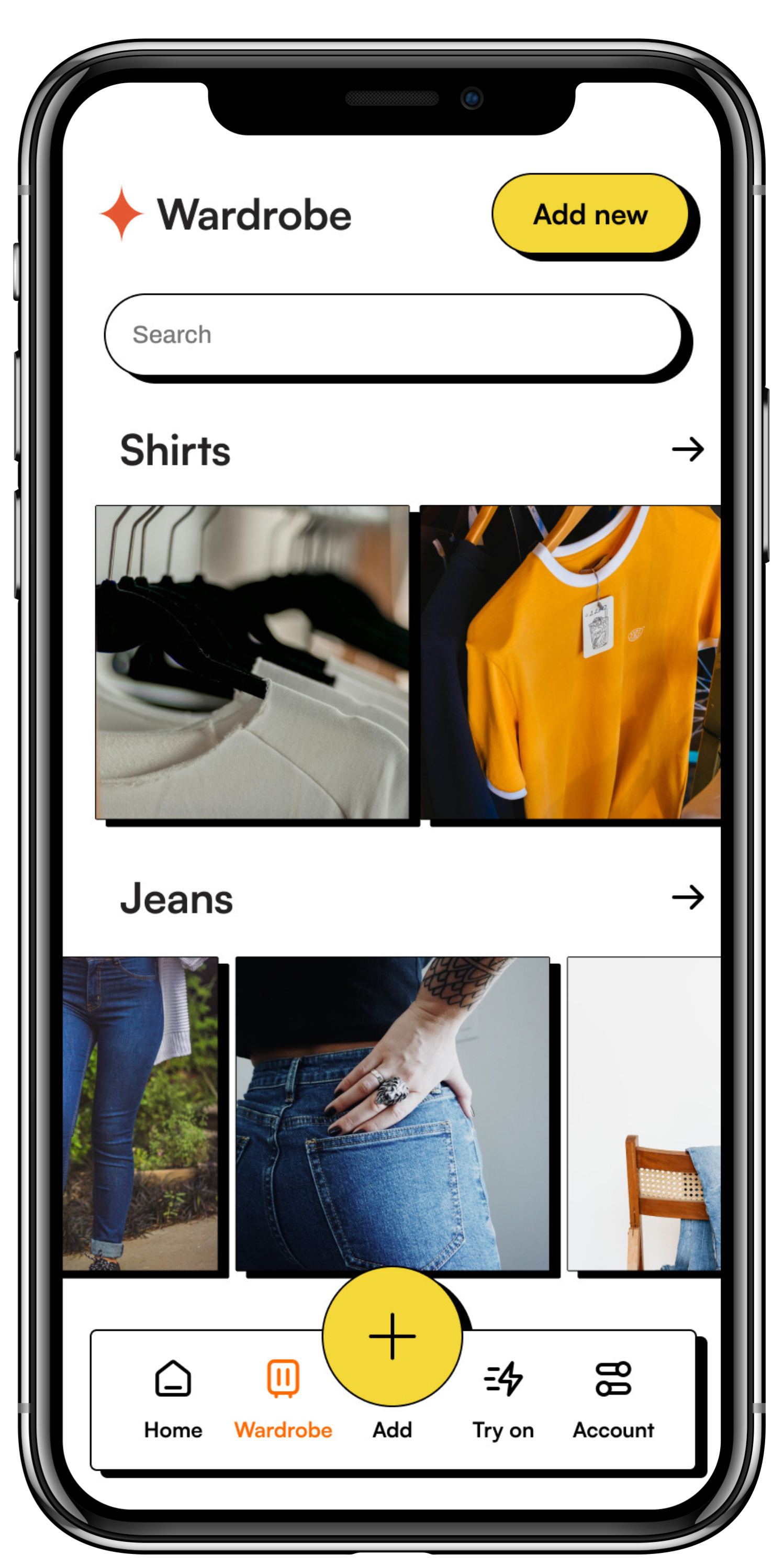-
Outfreak provides users with a comprehensive wardrobe management tool that helps them maximize their existing clothing, reduce fashion waste, and engage in sustainable fashion practices. By merging digital organization with eco-conscious solutions, Outfreak empowers users to make the most of their wardrobes.
-
Understand how users manage and refresh their wardrobes.
Identify motivations and barriers to swapping, re-wearing, or repurposing clothes.
Explore user pain points related to wardrobe organization, outfit planning, and sustainable fashion.
Investigate users' interest in sustainable fashion and the desire for digital wardrobe solutions.
-
User Interface Design
User Experience Design
User Research & User Flows
Wireframing
prototyping
Methodologies
User Interviews (3): Conducted one-on-one interviews with fashion enthusiasts, minimalists, and impulse shoppers to understand their clothing habits and challenges in managing wardrobes.
Surveys (19 responses): Distributed online surveys through social media to gather quantitative insights on user behaviours, preferences, and sustainable fashion practices.
Competitive Analysis: Analyzed fashion apps like Cladwell, Whering, Save Your Wardrobe, and secondhand platforms like Poshmark, Depop, and Facebook Marketplace.
Key Insights & Takeaways
95%
reported owning clothes they never wear, highlighting the issue of under-utilized wardrobes.
42%
of participants have not used any digital tools for fashion or wardrobe organization
32%
of respondents buy secondhand or thrifted clothes occasionally, and 21% do so often.
32%
would engage with a wardrobe management app only to receive outfit suggestions
47%
preferred sustainable or secondhand fashion while following fashion trends.
Pain Points
Users often forget about certain clothing items due to disorganized wardrobes.
There is a desire for tools that help visualize and plan outfits using existing clothing.
Barriers to re-wearing clothes include fit issues, changing trends, and boredom.
Interest in sustainable fashion practices is growing, but users need accessible solutions
Problem Statement
Many users experience "wardrobe overload," with too many clothes but still feel like they have "nothing to wear." This is often due to impulse shopping, a lack of organization, and difficulty tracking items in their wardrobe, leading to underutilization of their clothing and a reluctance to repeat outfits.
Design Process
1. Ideation
Based on research findings, we brainstormed features that would address user pain points:
Digital cataloging of wardrobe items.
Outfit planning and suggestions based on existing clothing.
Styling tips and inspiration to encourage re-wearing and restyling
2. Information Architecture & User Flows
We mapped out the core journey:
Onboarding and account setup
Adding Items to wardrobe with minimal friction
AI Integration for outfit suggestions.
FLOWCHART
STYLE TILE
3. Wireframes & Prototypes
We developed wireframes and interactive prototypes using Figma, focusing on intuitive navigation and user-friendly interfaces. Key screens included:
Home Screen: Overview of wardrobe statistics and outfit suggestions.
Wardrobe Catalog: Visual representation of all clothing items with filtering options.
Outfit Planner: Tool for creating and saving outfit combinations.
4. Testing & Iteration
We conducted usability tests with 5 target users. Feedback led to:
A more prominent “Add Habit” CTA
Simplified long-press habit logging
A more intuitive reminder setup
Clearer progression feedback from Buddy
We then moved to high-fidelity mockups incorporating playful animations, celebratory UI moments, and calming colors.














